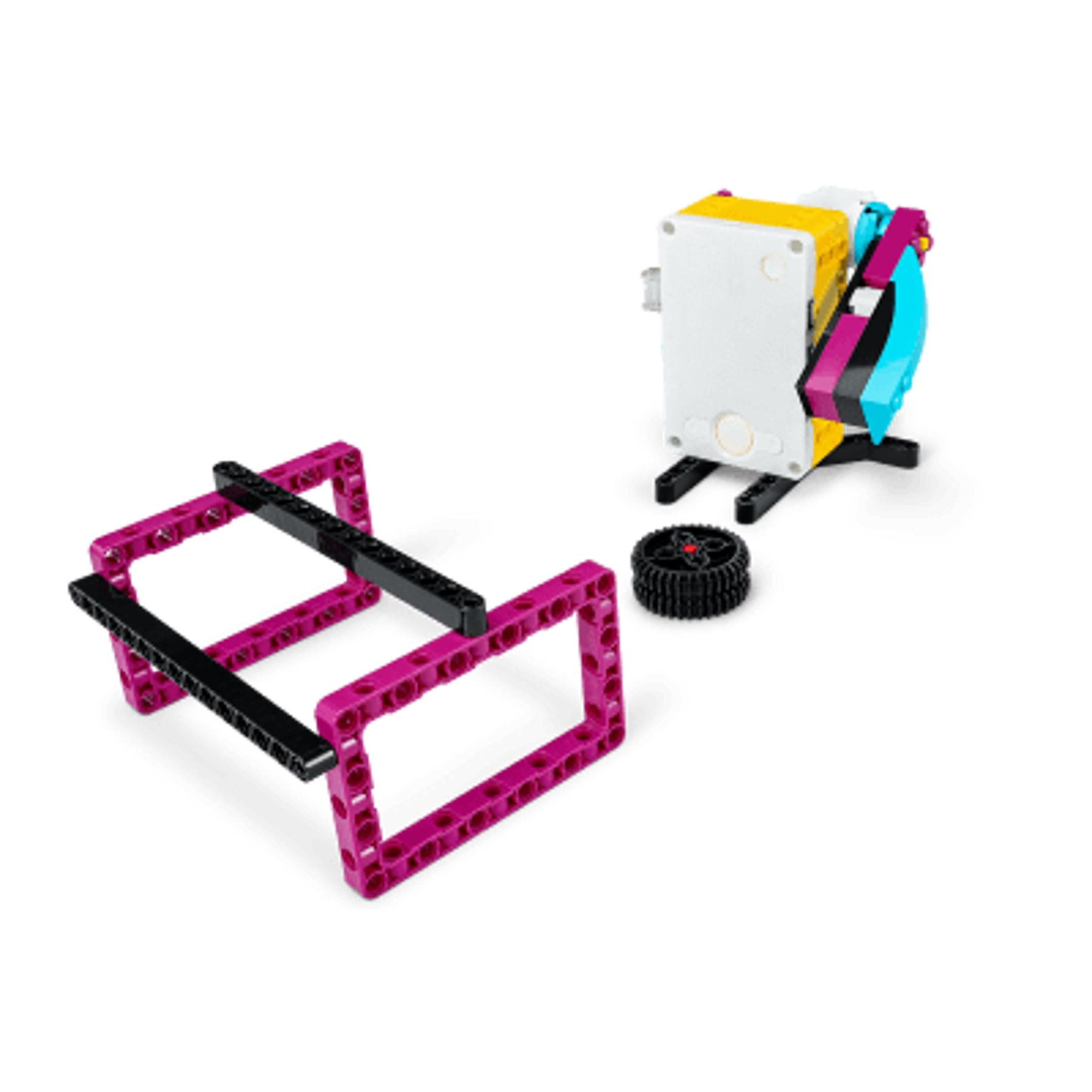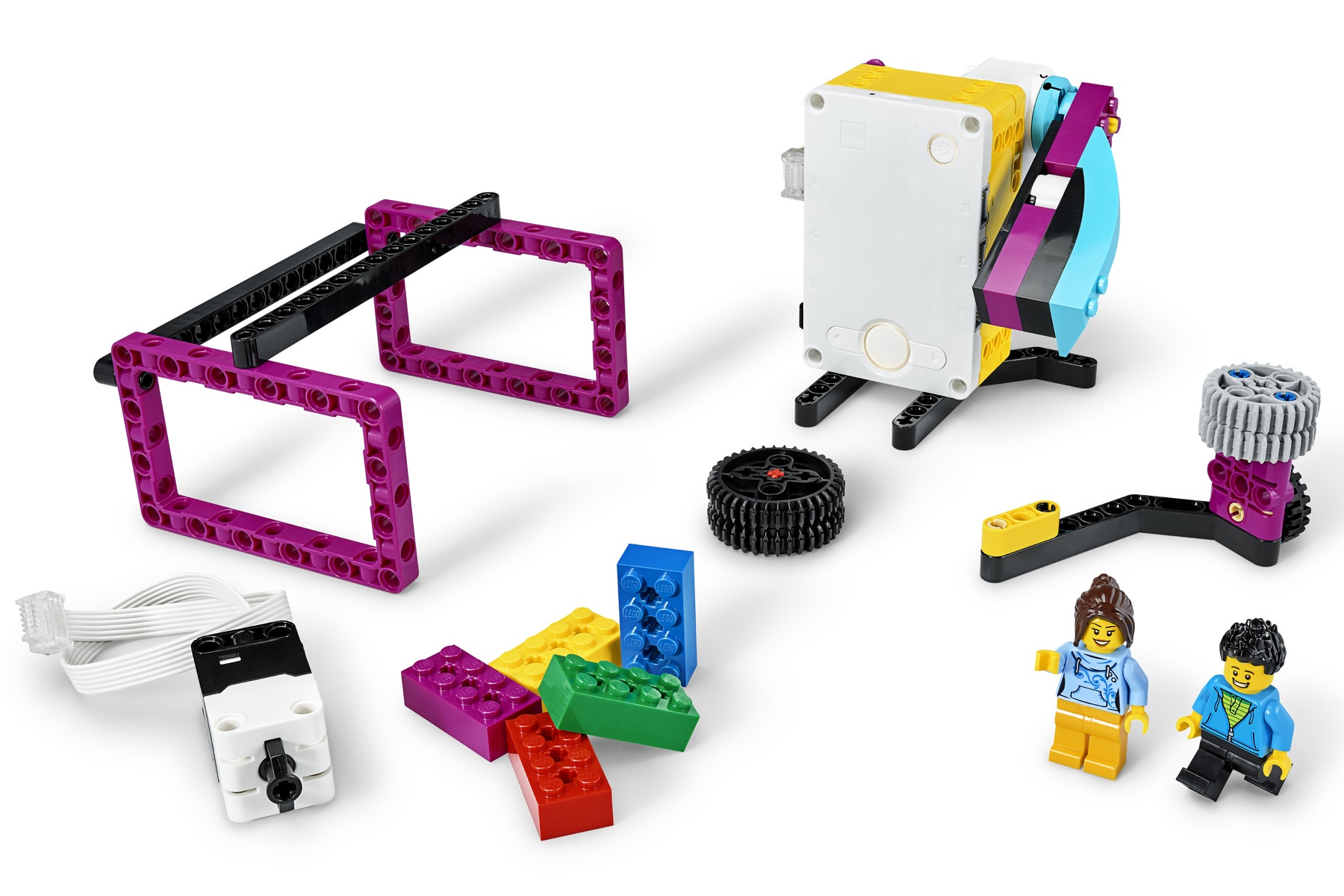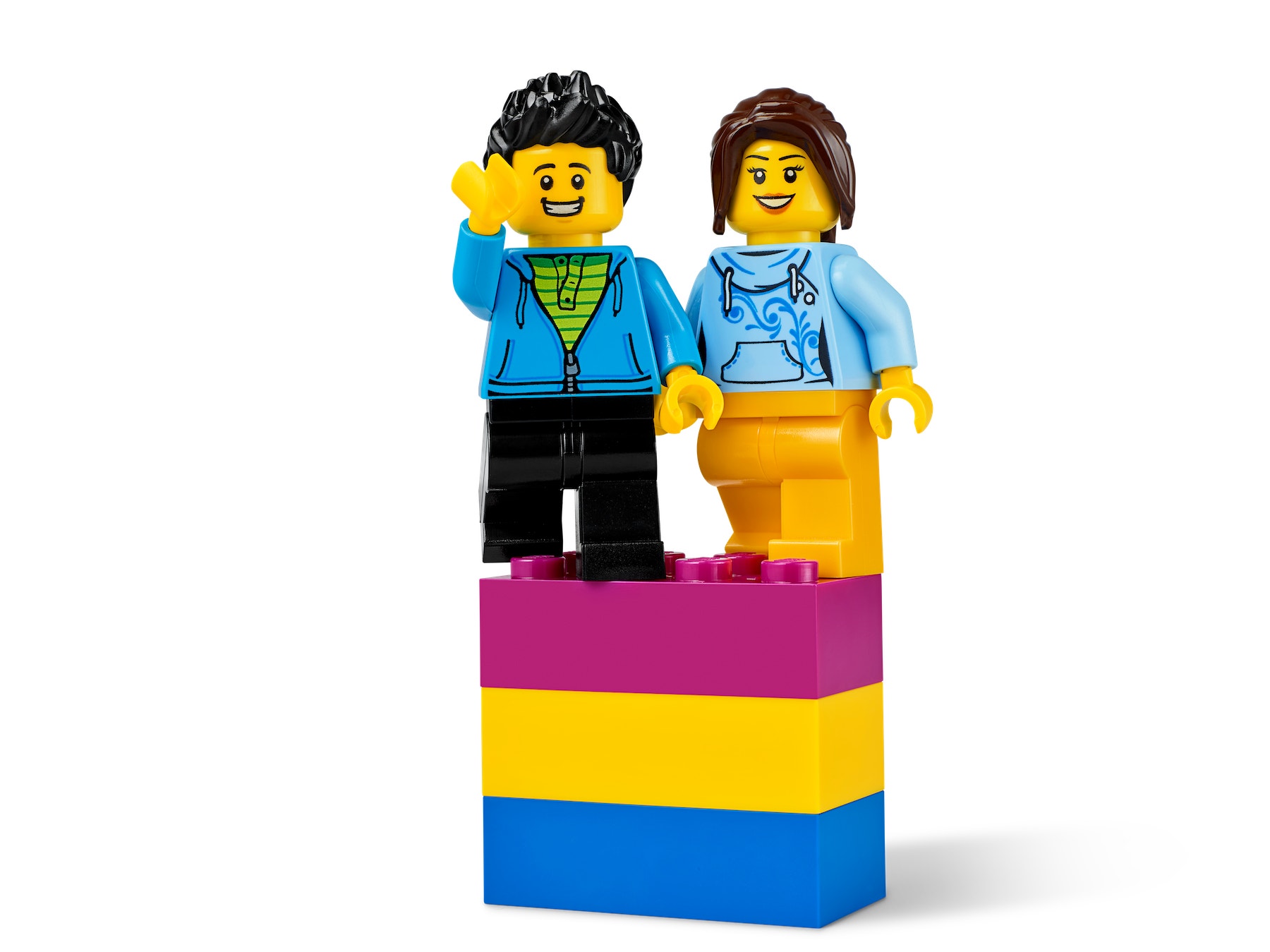Goal!
Collaborate to build a fun table-top challenge and score as many goals as possible.

Lesson plan
1. Prepare
- Read through the pupil material in the LEGO® Education SPIKE™ App.
- If you feel that it's necessary, plan a lesson using the getting started material in the app. This will help to familiarise your pupils with LEGO® Education SPIKE™ Prime.
2. Engage (5 Min.)
- Use the ideas in the ‘Ignite a Discussion’ section below to engage your pupils in a discussion relating to this lesson.
- Use the video to explain the lesson.
3. Explore (10 Min.)
- Have your pupils work in pairs to build the models for this lesson.
- Encourage them to collaborate as they build.
- Ask them to try out the challenge by playing the program.
4. Explain (10 Min.)
- Challenge each team to score as many goals as possible in one minute.
- If you'd like, you can have a follow-up discussion about collaboration and what your pupils have learned so far.
5. Elaborate (15 Min.)
- Challenge each team to create their own challenge.
- Have the teams share their challenges and challenge each other to matches.
- Don't forget to leave some time for tidying up.
6. Evaluate
- Give feedback on each pupil's performance.
- In order to simplify the process, you can use the assessment rubrics that have been provided.
Ignite a Discussion
Start a discussion about collaboration by talking about effective collaborative behaviours. Focus your pupils' attention on few key elements of successful collaboration. These could be:
- Identifying and agreeing on a common goal
- Clarifying roles within the team
- Being honest about mistakes
- Creating together
To deepen the discussion, talk about the differences between collaboration and teamwork.
- Successful teamwork is based on having a strong leader to guide the team towards a goal. If you have a strong leader and a clear goal, each team member can work on a distinct part of the project. Direction from the team leader is the key to good teamwork.
- For successful collaboration, the group has to work together... and think together. The end product comes from the combined efforts of the group. This means that collaborators are equal partners – there is no single leader.
Have your pupils watch this video to see what they're about to do.

Building Tips
Customising Different Elements
Here are some ideas that your pupils could use in creating their challenges:
A. Add a Force Sensor to hit the disk as many times as they’d like.
B. Add a second disk to create more action.
C. Use the LEGO bricks to create a point system (e.g. red = 1 point, green = 2 points).
D. Use a LEGO Minifigure as the goalie or as an obstacle to avoid.

Coding Tips
Main Program

Differentiation
Take this lesson to the next level by:
- Repeating the lesson in new teams, making sure to provide feedback to help your pupils improve their collaboration
- Incorporating the maths or language arts extension(s)
Assessment Opportunities
Teacher Observation Checklist
Establish a scale that suits your needs, for example:
- Partially accomplished
- Fully accomplished
- Overachieved
Use the following success criteria to evaluate your pupils' progress:
- The pupils collaborated with one another throughout the lesson.
- The pupils assigned specific roles within their team.
- Th pupils used everyone's ideas in order to solve problems together.
Self-Assessment
Have each pupil choose the brick that they feel best represents their performance.
- Blue: I've collaborated and scored a lot of goals.
- Yellow: I've collaborated and created an original challenge.
- Violet Brick: I've collaborated and used ideas from everyone in our team to create a challenge.
Peer-Assessment
Encourage your pupils to provide feedback to one another by:
- Having one pupil use the coloured brick scale above to score another pupil’s performance
- Asking them to present constructive feedback to one another so that they can improve their group’s performance during the next lesson

Language Arts Extension
To incorporate the development of language arts skills:
- Ask your pupils to write down the rules of their challenge.
- Have them use illustrations and graphics to explain the rules.
Note: This will require additional time.
Maths Extension
To incorporate the development of maths skills:
- Have your pupils graph the direct relationship between the power level of the programming block and the distance travelled by the disk.
- Ask your pupils to collect data about the number of shots, number of shots on goal, number of goals and number of successful passes, and then use this data to generate statistics.
Note: This will require additional time.
Teacher Support
The pupils will:
- Collaborate to solve various challenges
- Collaborate to develop a new challenge
LEGO® Education SPIKE™ Prime Set
CAS Computing Progression Pathways
Algorithms:
Uses diagrams to express solutions. (AB)
Recognises that different solutions exist for the same problem. (AL) (AB)
Information Technology:
Makes appropriate improvements to solutions based on feedback received, and can comment on the success of the solution. (EV)
Designs criteria to critically evaluate the quality of solutions, uses the criteria to identify improvements and can make appropriate refinements to the solution. (EV)




